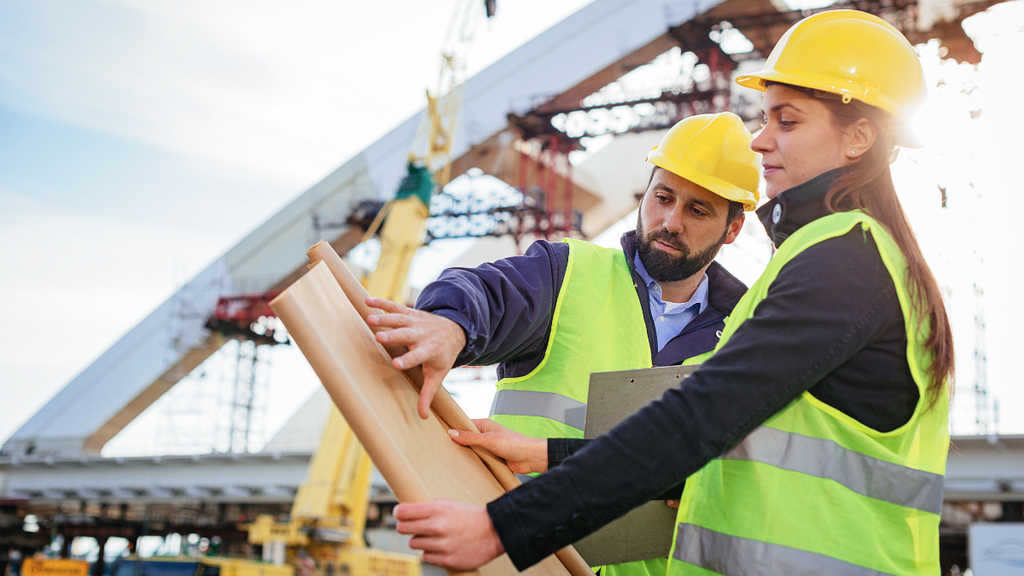Geotheta for Dummies
Table of ContentsLittle Known Questions About Geotheta.The Ultimate Guide To GeothetaUnknown Facts About GeothetaIndicators on Geotheta You Need To KnowThe Main Principles Of Geotheta

They perform site investigations, gather examples, perform lab examinations, and analyze data to examine the viability of the ground for construction projects - Geotechnical Engineers. Based upon their searchings for, geotechnical engineers offer suggestions for structure layout, incline security, preserving structures, and mitigation of geotechnical hazards. They collaborate with other experts, such as designers, structural engineers, and building teams, to ensure that geotechnical considerations are integrated right into the total task layout and execution
By analyzing the behavior and residential or commercial properties of soil and rock, they can identify possible geotechnical hazards such as landslides, soil negotiation, or incline instability. Their proficiency aids stop failures or accidents that could jeopardize lives and residential property. Here are some comprehensive duties and obligations of a geotechnical designer: Website Investigation: Geotechnical engineers conduct website investigations to gather information on subsurface problems.
They analyze the information to recognize the properties and actions of the soil and rock, including their toughness, leaks in the structure, compaction qualities, and groundwater conditions. Geotechnical Analysis and Design: Geotechnical engineers evaluate the data collected throughout website examinations to analyze the security and suitability of the site for building projects. They perform geotechnical calculations and modeling to evaluate variables such as birthing capability, settlement, slope stability, lateral planet stress, and groundwater flow.
The 10-Second Trick For Geotheta
Structure Design: Geotechnical designers play an essential function in creating foundations that can securely support the intended framework. They examine the dirt problems and lots requirements to establish the suitable structure type, such as superficial foundations (e.g., grounds), deep foundations (e.g (https://geotheta.godaddysites.com/f/why-geotechnical-engineers-are-your-projects-best-friends)., heaps), or specialized strategies like dirt enhancement. They think about factors such as negotiation restrictions, birthing capability, and soil-structure interaction to develop optimum structure designs
They review building and construction plans, monitor website activities, and perform area assessments to confirm that the design referrals are complied with. If unexpected geotechnical issues arise, they analyze the circumstance and provide recommendations for removal or changes to the design. Risk Assessment and Mitigation: Geotechnical designers examine geotechnical risks and risks related to the job site, such as landslides, liquefaction, or dirt erosion.

Cooperation and Interaction: Geotechnical engineers function closely with various other experts associated with a task, such as architects, architectural engineers, and building and construction groups. Effective interaction and cooperation are necessary to incorporate geotechnical considerations right into the general task style and construction procedure. Geotechnical engineers supply technical competence, response queries, and make sure that geotechnical requirements are fulfilled.
An Unbiased View of Geotheta
Right here are some kinds of geotechnical designers: Structure Engineer: Foundation engineers focus on making and examining structures for frameworks. They evaluate the dirt problems, load demands, and website qualities to identify one of the most appropriate structure kind and style, such as shallow structures, deep structures, or specialized techniques like heap foundations.
They evaluate the elements influencing incline security, such as soil residential properties, groundwater conditions, and slope geometry, and develop techniques to avoid incline failures and mitigate risks. Earthquake Designer: Quake engineers concentrate on examining and making structures to withstand seismic pressures. They examine the seismic threat of a site, review dirt liquefaction possibility, and create seismic layout requirements to guarantee the safety and security and resilience of frameworks throughout earthquakes.
They execute area testing, gather examples, and assess the accumulated data to define the dirt buildings, geologic formations, and groundwater conditions at a site. Geotechnical Instrumentation Engineer: Geotechnical instrumentation engineers concentrate on tracking and gauging the behavior of soil, rock, and frameworks. They set up and maintain instrumentation systems that monitor factors such as soil negotiation, groundwater levels, incline activities, and architectural displacements to examine performance and supply very early warnings of prospective problems.
Excitement About Geotheta
They carry out tests such as triaxial examinations, loan consolidation tests, direct shear examinations, and leaks in the structure tests to gather information for geotechnical evaluation and design. Geosynthetics Engineer: Geosynthetics designers specialize in the layout and application of geosynthetic materials, such as geotextiles, geogrids, and geomembranes. They utilize these products to boost soil security, reinforce inclines, offer water drainage services, and control erosion.
They have a tendency to be investigative people, which suggests they're intellectual, reflective, and curious. They wonder, systematic, reasonable, analytical, and rational. A few of them are likewise social, meaning they're kind, generous, participating, client, caring, handy, empathetic, sensible, and friendly. Does this seem like you? Take our complimentary job examination to discover if geotechnical designer is among your leading job suits.
In the office environment, geotechnical designers use specialized software devices to perform calculations, produce styles, and assess data. They prepare reports, testimonial job specs, connect with clients and employee, and coordinate task activities. The workplace setting offers a helpful setting for study, analysis, and partnership with other professionals associated with the project.
Top Guidelines Of Geotheta
They frequently visit job sites to carry out site investigations, evaluate geotechnical conditions, and gather information for evaluation. These gos to include traveling to different places, sometimes in remote or difficult surfaces. Geotechnical designers might execute dirt sampling, conduct examinations, and screen construction tasks to make certain that the geotechnical elements of the task are being carried out correctly.
Geotechnical designers also work in specialized geotechnical research laboratories. In these centers, they carry out experiments, carry out examinations on soil and rock examples, and examine the design homes of the materials. Geotechnical lab engineers function thoroughly in these atmospheres, handling screening equipment, operating important site instruments, and taping information. They collaborate with other lab staff to make certain accurate and trustworthy screening results.